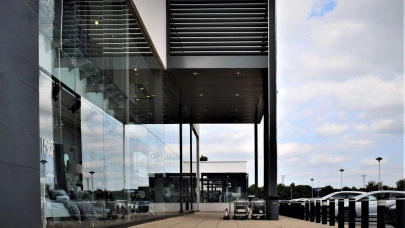
More companies will increasingly shift their focus towards enhancing the productivity and happiness of their people, rather than focusing on where they work from, shows an analysis of IWG on the trends that will shape work this year.
Companies that will impose return-to-office (RTO) mandates will face a wave of resignations. Research by IWG also found that two-thirds (67%) of recruiters observed an increase in candidates looking to leave companies that implemented five-day central office attendance.
“Hybrid working and its far-reaching benefits are now firmly on the boardroom agenda - providing a blueprint for a sustainable, agile, and resilient future of work,” says Mark Dixon, Founder and CEO of IWG.
Hybrid work can boost productivity
In 2025 and beyond, companies will increasingly prioritise outputs over traditional 9 to 5 hours and hybrid work arrangements can boost productivity of employees.
Small businesses look for flexible spaces
Furthermore, as the surge of small businesses continues post-pandemic, the demand for scalable, flexible workspaces is set to rise even further in 2025. Small and medium-sized enterprises now account for around half of global GDP and around 40% of all employment.
Commuter towns to shine more
Hybrid working is revitalising commuter towns and reshaping economic landscapes. This boost is set to grow even further in 2025 as people opt for a more fulfilling work-life balance, forgoing long commutes for a mix of home, flexible workspaces, and occasional central office visits.
Digital native employees want more flexible workspaces
By 2025, Gen Z will make up a third of the workforce, influencing workplace norms with their digital prowess and expectations for flexibility. As digital natives who are accustomed to working anywhere – whether school, college or personal - two-thirds of new graduates reject the idea of a five-day commute to a central office.
There is a growing appreciation by both employees and employers of the cost- and time-saving benefits of working locally – and a realisation that the long daily commute to a city centre office no longer makes sense. For instance, a young worker in Red Bank, New Jersey, might save $388,320 over the course of their career by working locally and commuting into a central office once a week.
In addition, hybrid work, that is offering flexibility for those juggling child and family care, is proving invaluable for women, with two-thirds reporting that it has opened up work opportunities that they would not otherwise have had.
Hybrid work as a benefit for employees
By 2025, flexible and hybrid working arrangements are set to become as coveted as health insurance in compensation packages. In addition, the impact of hybrid working has reduced the number of inner-city commuters, and is driving investors, landlords and developers towards mixed-use schemes.



